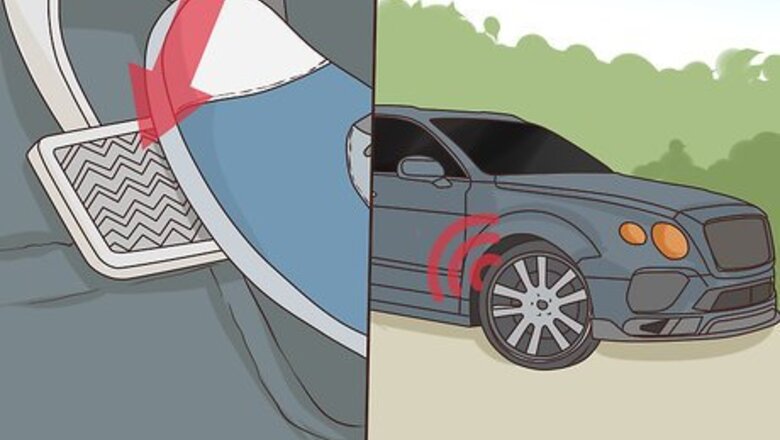
views
X
Research source
If you notice symptoms of worn brake pads, you can do a rough estimate with a straw, or you can do a more precise measurement by taking off the wheel. If you notice that your brake pads are worn down, you should replace them as soon as you can.
Recognizing Symptoms of Worn Brake Pads
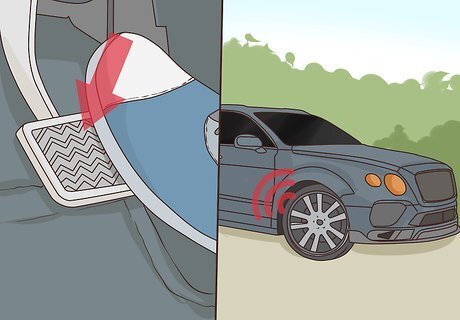
Listen to your brakes as you come to a stop. Many brakes have squealers installed on them which will indicate when your brake pads start to wear thin. These squealers will let out a loud, high-pitched sound when your brake pads get too thin. You can see if your brakes have squealers by taking off the wheel. It will be a small tab of metal next to your pads.
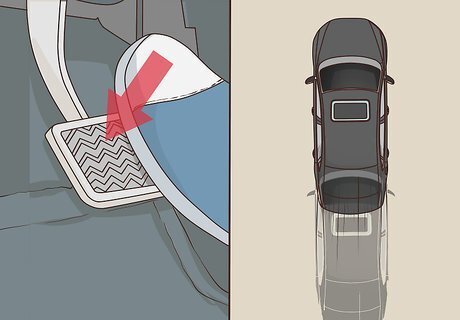
Feel your brakes as you come to a stop. If you push the brake down to the floor but your car doesn’t come to an immediate stop, your brake pads might be worn down.
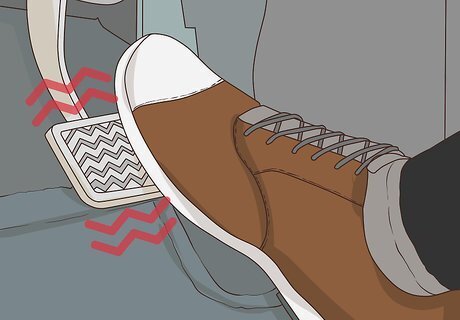
Check for a pulsating or vibrating brake pedal. A pulsating or vibrating brake pedal may mean your rotors are warped. A mechanic will be able to better evaluate the issue. You might also feel your car grinding when you try to stop if your brake pads are worn.
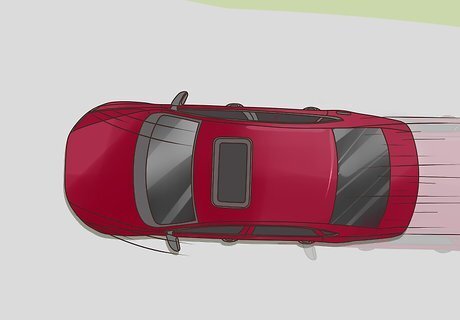
Determine whether your car pulls to one side when you stop. Pulling to one side as you come to a stop is an indication that one side of the brakes are more worn than the other side. If you notice your car pulling to one side when you press the brake pedal, check that side's front tire and make sure that the brake pad isn't worn down.

Get a professional to inspect your rear brakes. Some older cars and rear brake systems may have brake shoes instead of pads. These are cylindrical metal rings that fit around your wheel's rotors. If you suspect that your brake shoes are bad, you should take your car to a mechanic so that they can inspect them. The exterior "braking material" (usually made of metal) should measure the same thickness on both sides. You can take measurements of the material with a ruler. Rear brake shoes are good for 30,000–40,000 miles (48,000–64,000 km) and can last twice as long as your front brakes.
Estimating Brake Pad Thickness with a Drinking Straw
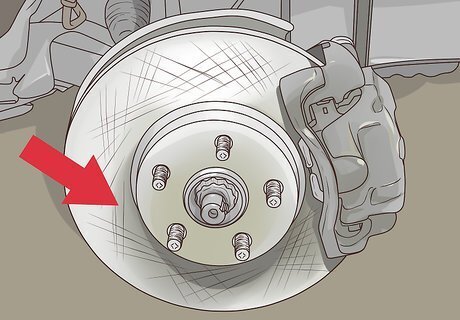
Look in between the spokes and locate the rotor on the front brakes. If you look in between the holes in your tire you can see the rotor, which is the round metal part that your rubber wheel fits over. Many vehicles will have drum brakes on the rear wheels, which have brake shoes rather than brake pads.
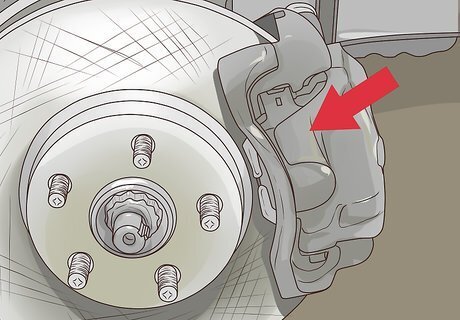
Find the caliper next to the rotor. Find the long metal piece pressing up against the rotor. The large metal piece clamped to the side of the rotor is called the brake caliper. If you look inside of the caliper you should see a rubber lining. This rubber lining is your brake pads. This method is less accurate than taking your wheel off and measuring the brake pads. Make sure your car has been turned off for a while or it may still be hot.
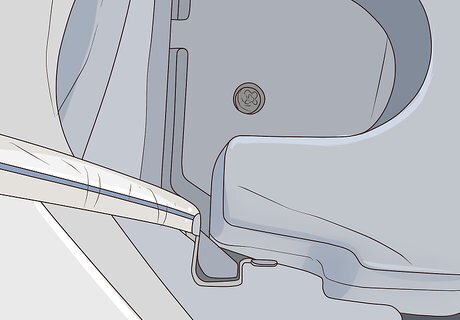
Push a straw in between the brake caliper and rotor. Shove a straw in between the caliper and the rotor. Continue pushing the straw until the straw hits the brake disc and comes to a stop.

Use a vernier caliper to get a more accurate reading. A vernier caliper is a measuring tool that's able to measure in small spaces where a ruler can't reach. Stick the end of the vernier caliper through the hole and read the top of the tool to get a measurement for your brake pads. You can purchase a vernier caliper at a hardware or automotive store or online.
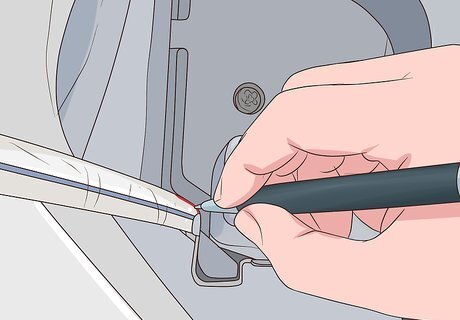
Make a line on the straw with a pen and measure it. Use a marker to make a line where the straw and brake pad meet. Use a ruler or tape measure to measure the space between the end of the straw and your line. This will give you an approximation for how thick your brake pads are.

Subtract 5 millimetres (0.20 in) from the number. The brake pad backing plate is about 5 millimetres (0.20 in)-thick, so you must subtract it from your number to get the accurate width of the brake pads. Your brake pads should be at least ⁄3 inch (8.5 mm)-thick after you subtract 5 millimetres (0.20 in).
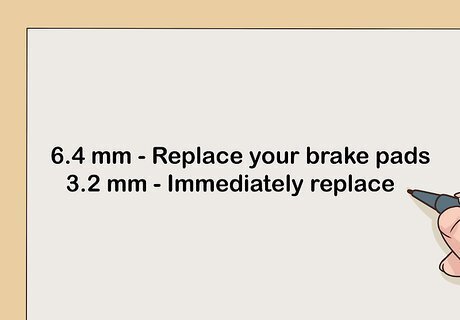
Replace your brake pads if they are under ⁄4 inch (6.4 mm)-thick. A new brake pad is usually around ⁄2 inch (13 mm)-thick. Once it has worn half-way, you have to replace it soon. Brake pads that are ⁄8 inch (3.2 mm)-thick should be immediately replaced and aren't safe to drive on.
Measuring Your Brake Pads by Taking off the Wheel
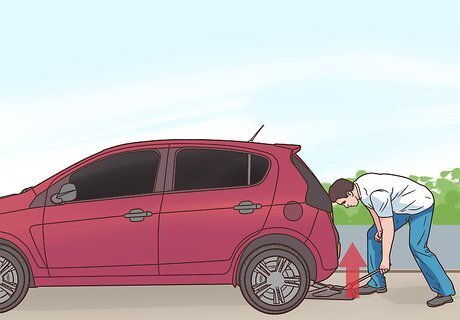
Jack up your car. Find the jack point on the front of your car and place the jack under it. The jack point is usually right behind the front wheel. Pump the handle to raise your car's wheel off the ground. Jack your car up on the side that you want to examine. If you've never used a jack on your car, get help from someone who has instead of doing it yourself.
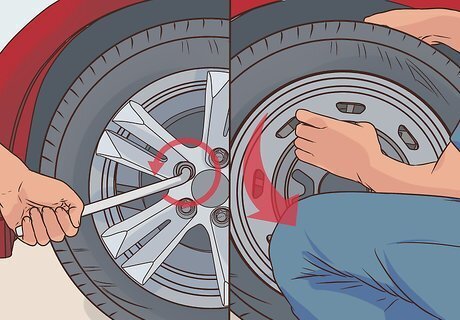
Remove your wheel. Loosen and remove the bolts by turning them counterclockwise with a lug or torque wrench. Once the wheel is loose, pull it off the rotor. You should now see the brake rotor and caliper. The caliper is a metal piece that fits over your wheel’s disc. You can remove most tire bolts with a lug or torque wrench. Check the rotors—if there's any grooving on them, you'll need to replace those.
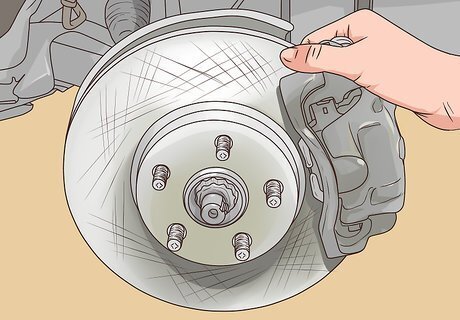
Locate the brake pads. Look into the hole in the caliper to see your brake pads. They will look like two sheets of rubber pressed against each other. While your tire is off you can see both internal and external brake pads. Measure both sides of the brake pads.
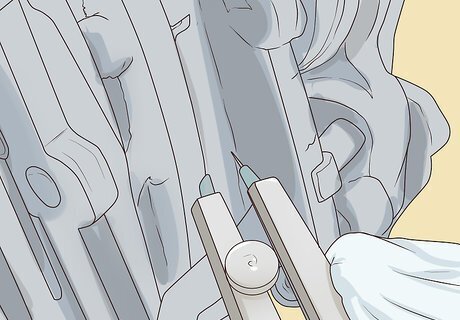
Use a compass to measure the brake pads. Since it’s a small space, it may be difficult to measure the pads because they are deep within the caliper. In this case, use a compass to measure the width of each side of the brake pads. Position one prong of the compass on the left side of the pad and position the other prong on the right side of the pad. Measure the space in between the prongs on the compass to get a measurement for your brake pads. If one brake pad is worn down and the others aren't, the caliper may be sticking. If that happens, replace the caliper.

Replace the pad if it’s under ⁄4 inch (6.4 mm)-thick. If your brake pads are ⁄4 inch (6.4 mm)-thick it means that they need to replaced soon. If they are ⁄8 inch (3.2 mm)-thick or less, they need to be replaced immediately and could cause permanent damage to your rotors.


















Comments
0 comment